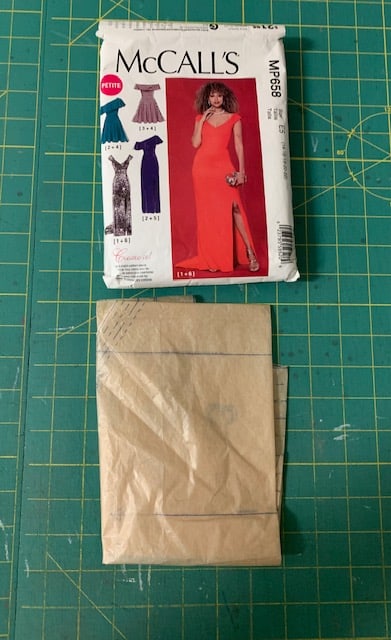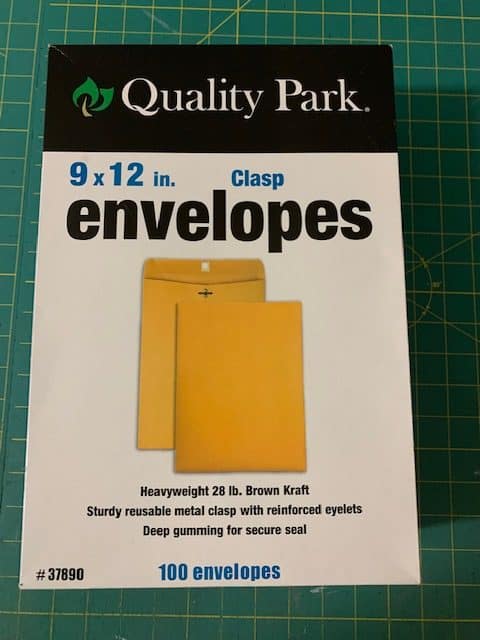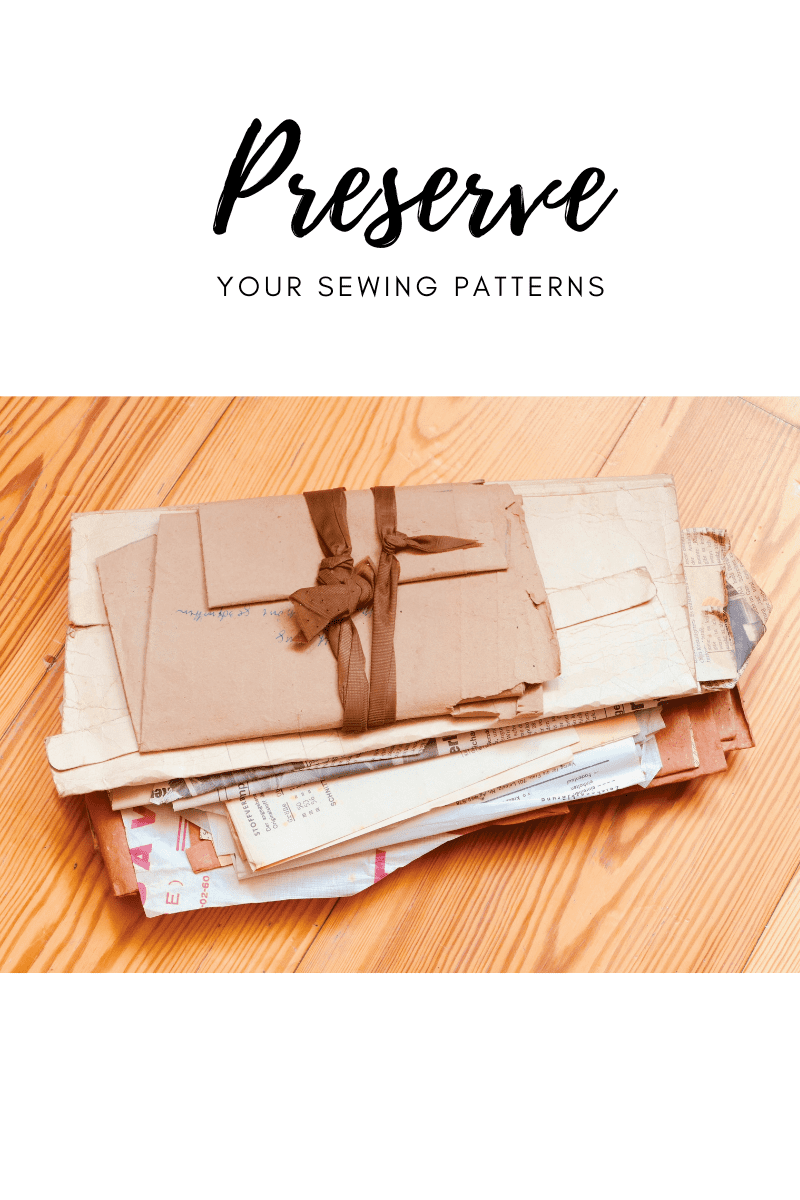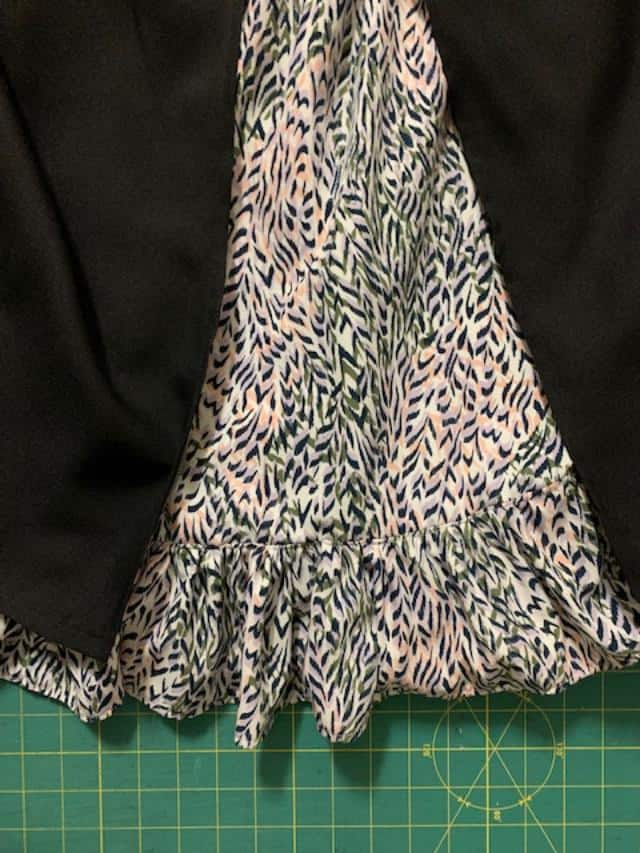How Do You Make Sewing Patterns Last Longer?
Learning to sew means you will purchase sewing patterns at some point. Once you have sewing patterns, how do you store them? How do you make sewing patterns last longer? This blog will review some options available for preserving your patterns.
To Cut Or Not To Cut
There are two schools of thought when it comes to cutting a sewing pattern. You’re either wholly for it or against it. I’ll admit, I’m a pattern cutter.
There isn’t a single pattern in my collection that is vintage or irreplaceable. Even if the pattern is OOP or out of print, a copy can probably be found on Etsy, eBay or through other private sellers.
You might ask, what about vintage patterns? Surely you wouldn’t cut into old and weathered tissue paper from the early 20th century? Would you? Could you? Should you?
For vintage patterns, I would not cut them. Mainly because they wouldn’t be available in my size anyway. 🙂 There is no point in destroying a finite and hard to find historical resource just to make a garment.

How Do You Use A Sewing Pattern More Than Once?
One of the best ways to make a pattern last longer is to make a workable copy. If the pattern piece is small enough to fit on your home copier, make a copy using regular copy paper.
More often than not, pattern pieces are larger than standard copy paper. You can tape a series of copy paper to make a surface area large enough for the pattern piece.
Make A Copy Using Pattern Paper
Place the original pattern piece above the surface area and transfer all the pattern markings using a tracing wheel. Make sure that you transfer ALL markings including circles, notches, triangles etc.
The purpose is to recreate the pattern in its entirety. Be sure to write the name or number of the pattern, seam allowance, quantity and type of fabric to be cut.
Once the pattern has been traced, you’ll be able to see the dotted lines on the surface area. Using a pencil or pen, go over all the dotted lines to finalize the pattern.
You can also use a tracing wheel and tracing paper instead. This option can be a little tedious but it works really well and reduces the need to go over the lines afterwards.
Just be mindful to not shift the pattern piece too much when moving the tracing paper. It would be best if weights are placed on the pattern to prevent shifting.

Make A Copy Using Swedish Tracing Paper
Another option is to create the copy using Swedish tracing paper, tracing paper or butcher paper. In this instance, you will lay any of these translucent papers on top of the pattern and trace the pattern onto them.
The advantage of using Swedish tracing paper is you can sew it as you would fabric. The traced pattern can then be used to make up your muslin. You can then make fitting adjustments as needed to the pattern.
The disadvantage of Swedish tracing paper is it is fairly narrow at 29”W x 30’L. You would need to tape pieces together to create a surface large enough to cover larger pattern pieces.

How Do I Make My Sewing Patterns More Durable?
If your original pattern is on tissue paper, any rough handling is going to destroy it. You can strengthen the tissue using non woven fusible interfacing. Non woven interfacing has the consistency of lightweight but strong paper.
Pellon brand interfacing is typically available by the bolt at your local craft store. Whichever brand you choose, the interfacing must be fusible.
To fuse the pattern to the interfacing, place the interfacing with the glue side facing up and the back of the pattern piece facing down. Cut away any excess interfacing to prevent melting the glue onto the iron or your ironing surface.
Using a hot dry iron, fuse the pattern piece to the interfacing. As an extra security, you can place a piece of flannel or a pressing cloth between the iron and the pattern to catch any excess glue.
Return To Original Pattern Envelope
Ok, so returning the pattern to the original envelope isn’t exactly an earth shattering tip is it? However, have you ever tried to refold the tissue to its original dimensions after using it? I have and I say it’s nigh on impossible!
Unless you’re an expert at origami, refolding pattern tissue is a messy and lumpy business. Just do the best you can to fold or shove that puppy back in the envelope without ripping it.

Use Manila Envelopes To Store Your Patterns
If returning the pattern to the original envelope is not an option, use manila envelopes instead. Manila envelopes are fairly inexpensive if you buy them in bulk and they are readily available.
At 9”x12”, manila envelopes are large enough to hold the pattern and instructions no matter how distorted they get. They are also large enough to hold printed PDF patterns.
To keep them organized, you can either paper clip or staple the original pattern envelope to the front or write the name of the pattern on the front. Whichever option you choose, the pattern can be stored indefinitely for future use.

Use Pant Hangers To Store Your Patterns
Pant hangers are useful for storing pattern pieces if you have the vertical space. After you create a copy of the pattern or reinforce it using interfacing, you might want to store the pattern as is.
You probably have pant hangers sitting unused in your closet right now. The clasps are perfect for gripping so you can hang many pattern pieces in your closet or behind a door for easy access.
Conclusion
Whether you decide to cut your pattern or make a copy of it, there are many options you can use to make your sewing pattern last longer. Do you have a favorite option? You might find that a combination of options work best for you and your sewing space.
Happy sewing!




